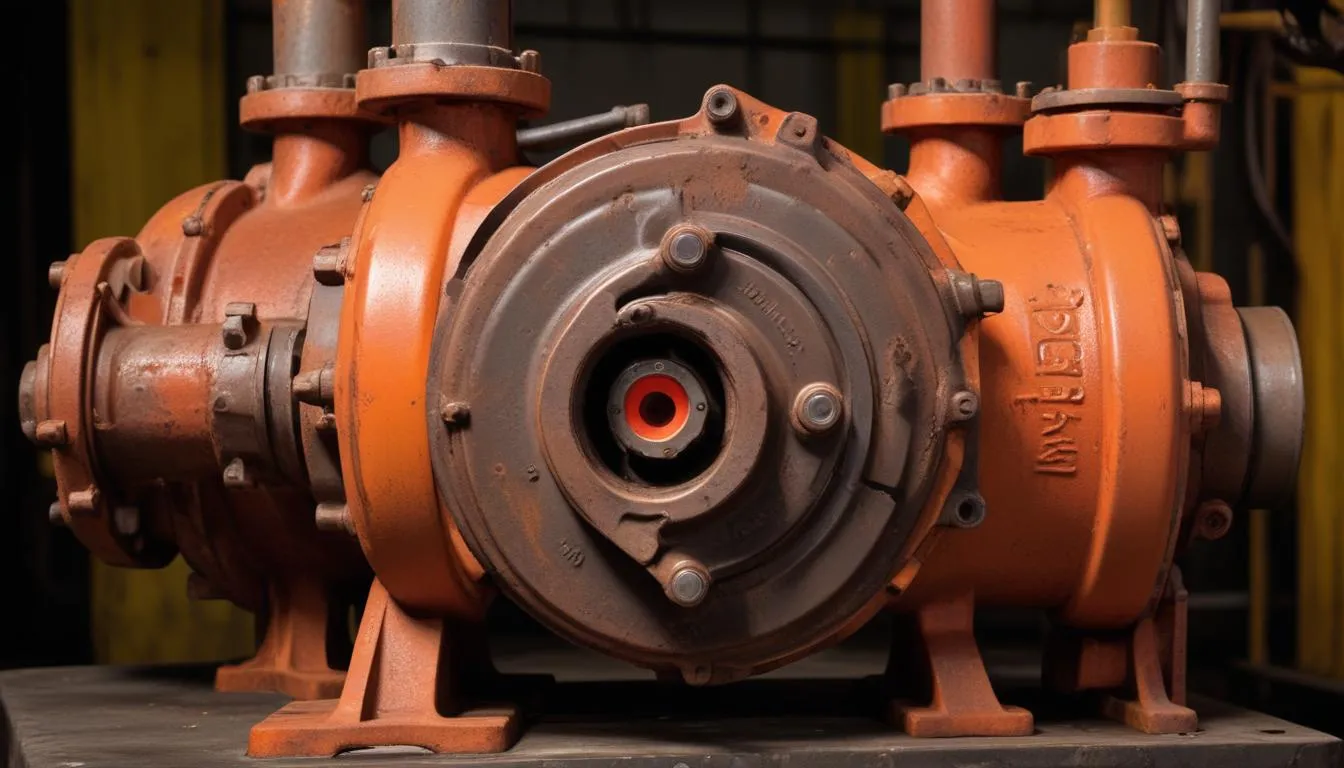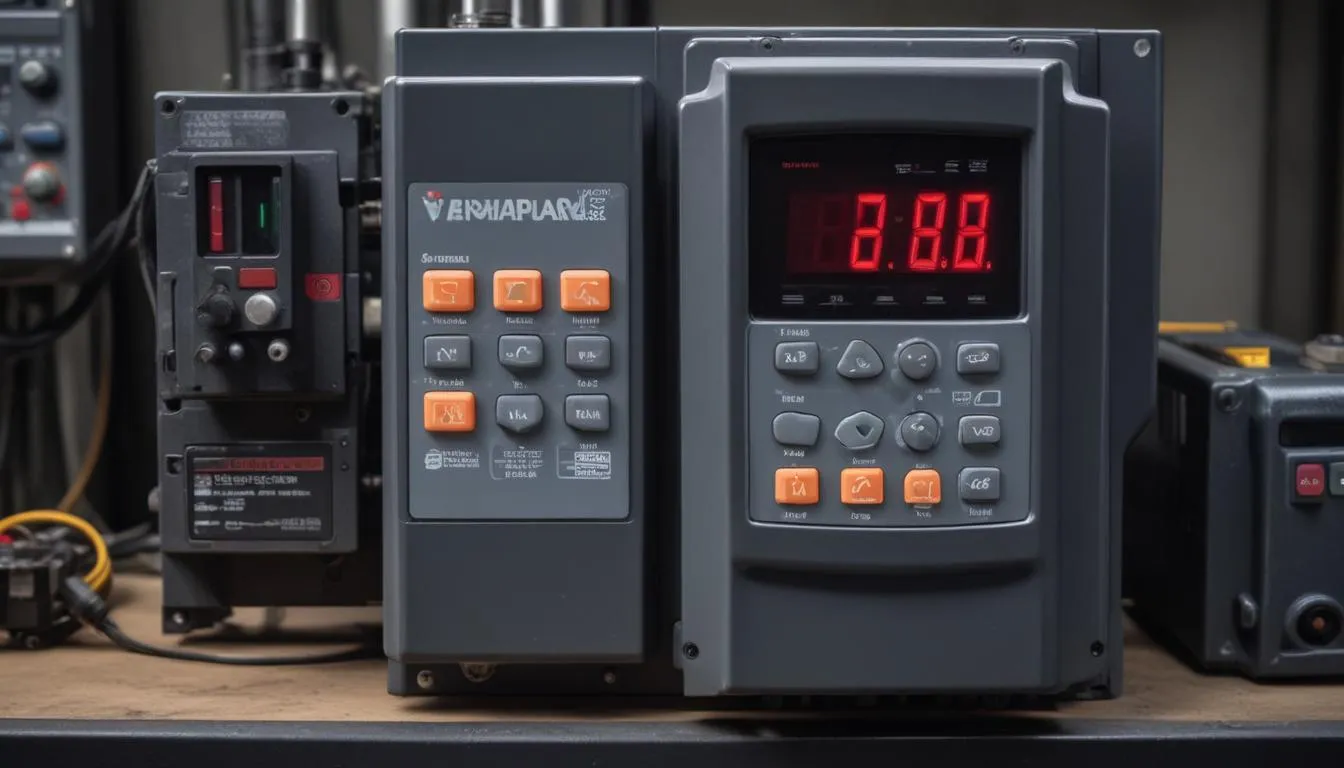 Assessing the condition of aging pumps is critical to determining the need for pump upgrades that can lead to significant performance improvement and cost savings. Regular assessments help identify inefficiencies, wear, and potential failures.
Assessing the condition of aging pumps is critical to determining the need for pump upgrades that can lead to significant performance improvement and cost savings. Regular assessments help identify inefficiencies, wear, and potential failures.
- Visual Inspection: Regularly inspect pumps for signs of leaks, corrosion, and physical damage. Look for surface wear, which can indicate the need for immediate attention.
- Vibration Analysis: Conduct vibration tests to identify imbalances or misalignments that could affect pump performance. Excessive vibrations can signal internal issues that require addressing.
- Performance Metrics: Monitor key performance indicators such as flow rate, pressure, and energy consumption over time. These metrics can reveal deteriorating conditions of the pump.
- Thermal Imaging: Utilize thermal imaging technology to detect overheating, which may indicate bearing or lubrication issues. High temperatures can lead to pump failure if not addressed promptly.
- Ultrasonic Testing: This non-destructive method helps assess the integrity of pump components by detecting emissions, indicating possible cracks or erosion.
Additionally, maintaining accurate records of all inspections and performance metrics facilitates trend analysis, enabling more informed decisions about necessary upgrades. It is essential to establish a comprehensive maintenance program that not only includes regular assessments but also embraces new technologies designed for the continuous monitoring of aging pumps. This proactive approach ensures that performance improvement is achieved, extending the life of the pumps while reducing operational costs.
Common Upgrades for Improved Efficiency
Upgrading aging pumps can significantly enhance their operational efficiency and extend their useful life. Several common upgrades are essential to achieving optimal performance improvement, ensuring that pumps operate at their peak capacity while reducing energy consumption and maintenance needs.
- Variable Frequency Drives (VFDs): VFDs allow for precise control of pump speed based on demand rather than running at a constant speed. This not only improves energy efficiency but also minimizes wear and extends the lifespan of the pump.
- Efficient Impellers: Replacing traditional impellers with high-efficiency designs can greatly enhance flow rates and reduce energy use. Modern impeller designs reduce turbulence and cavitation, resulting in smoother operation and increased efficiency.
- Seal and Bearing Upgrades: Implementing advanced sealing technologies and high-quality bearings can reduce friction and leakage, thereby improving reliability and reducing maintenance expenses. Mechanical seals, for instance, offer better performance compared to traditional packing.
- Automated Monitoring Systems: Integrating IoT (Internet of Things) technology enables real-time monitoring of pump conditions. Sensors can track vibrations, temperature, and flow rates, alerting operators to potential issues before they escalate, thus improving overall efficiency.
- Upgraded Materials: Using corrosion-resistant materials for pump components can significantly enhance durability in harsh environments. Such upgrades prevent degradation which can lead to inefficiencies and expensive repairs.
| Upgrade Type | Benefits | Impact on Lifecycle |
|---|---|---|
| Variable Frequency Drives | Improved energy savings and operational control | Extends life by reducing mechanical strain |
| Efficient Impellers | Enhanced performance and reduced operational costs | Increases reliability |
| Seal and Bearing Upgrades | Decreased maintenance needs and increased uptime | Prolongs pump life by minimizing wear |
| Automated Monitoring Systems | Real-time insights into pump performance | Aids in timely decision-making for replacements |
| Upgraded Materials | Enhanced durability and reduced risks of failure | Improves overall lifespan and efficiency |
Investing in these upgrades is not just about immediate gains but also about long-term savings and reliability. Each upgrade contributes to the strategic goal of modernizing systems to handle current demands, ensuring that aging pumps not only keep functioning but do so efficiently and effectively. Adopting these improvements is crucial for facilities aiming to achieve sustained performance improvement and minimize operational disruptions.
Technologies for Enhanced Performance
Integrating advanced technologies into aging pumps significantly enhances overall performance and efficiency. Various innovative solutions are available to modernize aging pumps, ensuring they meet today’s operational demands.
- Smart Pump Controllers: Utilizing smart controllers facilitates the automated adjustment of pump operations based on real-time data analysis. These systems optimize performance by adjusting flow rates and pressure according to fluctuating operational requirements, leading to remarkable performance improvement.
- Pump Condition Monitoring Systems: These systems employ sensors and analytical technologies to monitor vital parameters continuously, providing valuable insights into pump health. By identifying anomalies early, facilities can perform timely interventions, thus reducing downtime and repairing costs associated with aging pumps.
- Predictive Maintenance Technologies: Leverage artificial intelligence and machine learning for predictive maintenance applications. This technology anticipates failures by analyzing trends and patterns in pump performance data, allowing for strategic planning of maintenance activities that prevent unexpected breakdowns.
- Advanced Coatings and Liners: Applying specialized coatings can mitigate wear and corrosion associated with aging pumps. These enhancements not only extend the lifespan of pump components but also sustain their efficiency over time, promoting a culture of preventive maintenance.
- Energy Recovery Devices: Incorporating energy recovery devices can capture and reuse energy that would otherwise be lost during pump operation. This increases overall efficiency and contributes to substantial energy savings, making it an ideal upgrade for aging pumps.
| Technology Type | Benefits | Impact on Lifetime Performance |
|---|---|---|
| Smart Pump Controllers | Optimization of operations based on real-time data | Enhances efficiency and reduces operational costs |
| Pump Condition Monitoring | Early detection of potential failures, minimizing downtime | Supports extended service life through proactive maintenance |
| Predictive Maintenance | Strategic maintenance planning and reduction of unexpected failures | Boosts reliability and performance consistency |
| Advanced Coatings | Prevention of wear and corrosion | Increases component lifespan and efficiency |
| Energy Recovery Devices | Significant energy savings and enhanced overall efficiency | Improves sustainability and reduces operational costs |
Adopting these technologies not only provides immediate operational benefits but positions facilities for future challenges. Regularly upgrading to incorporate such advancements promotes longevity and reliability in aging pumps, making them capable of meeting evolving demands effectively.
Cost-Benefit Analysis of Upgrading
 Investing in upgrades for aging pumps requires a thorough understanding of the financial implications and potential returns on investment. Conducting a cost-benefit analysis is essential to ascertain whether upgrades will yield favorable outcomes compared to maintaining existing systems. This analysis involves evaluating both the upfront costs and the long-term savings associated with improved efficiency and reliability.
Investing in upgrades for aging pumps requires a thorough understanding of the financial implications and potential returns on investment. Conducting a cost-benefit analysis is essential to ascertain whether upgrades will yield favorable outcomes compared to maintaining existing systems. This analysis involves evaluating both the upfront costs and the long-term savings associated with improved efficiency and reliability.
The cost components typically include:
- Initial Upgrade Costs: This encompasses expenses related to purchasing new components, installation, and labor. Depending on the type of upgrade, costs can vary significantly. For instance, installing a Variable Frequency Drive (VFD) may seem expensive initially but can lead to notable energy savings.
- Downtime Costs: Any upgrade may involve some level of downtime. It’s crucial to account for production losses and the impact on overall operations during the installation period.
- Training Costs: Staff may require training to effectively operate new technologies or systems, adding to the initial expenditure.
On the benefits side, consider the following factors:
- Energy Savings: Enhanced efficiencies often lead to significant reductions in energy consumption. For example, pumps fitted with VFDs can operate at optimal speeds, thereby reducing energy costs substantially.
- Reduced Maintenance Expenses: Upgraded systems are generally more reliable and require less frequent maintenance. This translates into direct cost savings over time, particularly for aging pumps prone to breakdown.
- Extended Equipment Lifecycle: Incorporating advanced technologies can prolong the lifespan of pumps. By investing in pump upgrades, facilities may avoid the costs associated with premature replacements.
- Improved Productivity: Enhanced performance can increase operational efficiency, leading to higher outputs and greater productivity in manufacturing or processing environments.
To weigh the investment against projected returns, apply a Return on Investment (ROI) formula:
| Parameters | Calculation |
|---|---|
| Initial Investment | Total costs of upgrades |
| Annual Savings | Sum of savings from reduced energy costs and maintenance |
| ROI | (Annual Savings – Initial Investment) / Initial Investment * 100 |
Establishing clear metrics for evaluating the impact of upgrades is vital. By generating this comprehensive analysis, stakeholders can make informed decisions that align with both immediate operational goals and long-term sustainability. A favorable cost-benefit analysis not only endorses the need for pump upgrades but also prioritizes investments that will lead to enhanced performance improvement for aging pumps.
Best Practices for Installation and Maintenance
- Preparation: Before beginning any installation or maintenance work, ensure the area is secure and all necessary tools and materials are readily available. Gather team members and clearly define roles to streamline the process.
- Follow Manufacturer Guidelines: Always adhere to the installation instructions provided by manufacturers. This includes proper handling of components, installation sequences, and recommended settings to enhance performance improvement.
- Use Qualified Personnel: Engage skilled technicians or certified professionals for installation and maintenance tasks. Their expertise is crucial to avoiding errors that could lead to inefficiencies and increased operational costs.
- System Testing: After installation, conduct a thorough testing phase to ensure the upgraded systems operate as intended. Monitor performance metrics such as flow rates, pressure, and energy consumption during this stage.
Maintaining aging pumps requires a proactive and systematic approach. Consider implementing the following best practices:
- Regular Maintenance Schedule: Develop a structured maintenance program that outlines routine inspections, cleaning, and servicing of aging pumps. This should include checking seals, bearings, and other critical components for wear.
- Documentation: Keep meticulous records of all maintenance activities, repairs, and upgrades performed on the pumps. This documentation aids in trend analysis and can predict future maintenance needs, enhancing efficiency.
- Employee Training: Ensure that staff members are trained in the latest technologies and maintenance practices related to pump operation. A well-informed team can quickly identify issues and mitigate risks associated with aging pumps.
- Utilize Monitoring Technologies: Implement automated monitoring systems to track the health of pumps in real time. These systems can provide alerts for any anomalies, facilitating timely interventions that prevent significant failures.
- Environmental Considerations: Pay attention to the operating environment of the pump. Implement protective measures against corrosion, contamination, and other environmental factors that can negatively impact the performance of aging pumps.
| Best Practice | Purpose | Outcome |
|---|---|---|
| Routine Inspections | Identify early signs of wear and tear | Increases reliability and prevents unexpected breakdowns |
| Performance Monitoring | Track key performance indicators | Enhances operational efficiencies and reduces downtime |
| Documentation | Maintain a detailed history of pump conditions | Facilitates informed decision-making regarding upgrades |
| Staff Training | Equip workers with knowledge on modern techniques | Improves maintenance success rates and safety |
| Use of Technologies | Leverage smart monitoring systems | Proactive maintenance leading to performance improvement |
By adhering to these best practices, facilities can ensure that their aging pumps are not only well-maintained but also configured for optimal performance. This strategic approach minimizes risks associated with aging pumps, leading to enhanced reliability and significant cost savings over time.